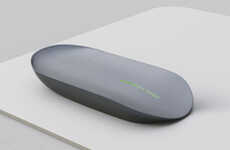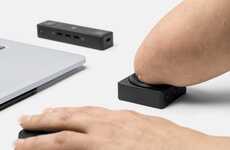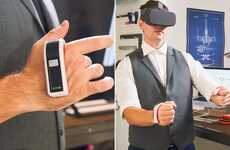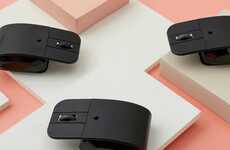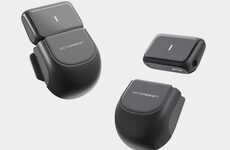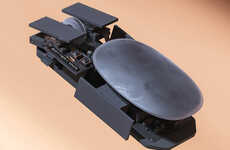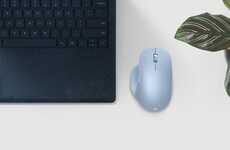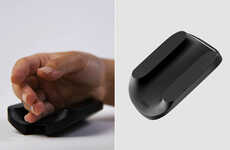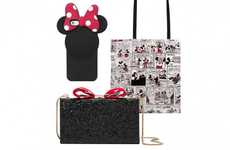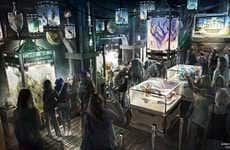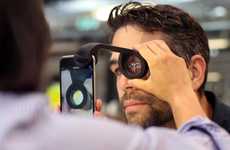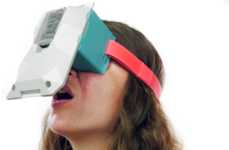
The CEBA 'GlassOuse' Mouse Redesigns the Mouse for the Disabled
Michael Hemsworth — May 2, 2016 — Lifestyle
The majority of computer peripherals on the market are designed for those with total mobility, so the CEBA 'GlassOuse' mouse lets differently abled users gain better control. An affordable alternative for users, the CEBA 'GlassOuse' mouse connects to computers via Bluetooth and works on a new style of operation.
Users wearing the glasses-like CEBA 'GlassOuse' mouse can shift their head to move the mouse and bite to click. This allows users to operate PCs without having to depend on those around them and maintain better control over the work they do.
The CEBA 'GlassOuse' computer peripheral lasts for up to ten days on a single charge thanks to the built-in battery pack and features a waterproof design on the incorporated button.
Users wearing the glasses-like CEBA 'GlassOuse' mouse can shift their head to move the mouse and bite to click. This allows users to operate PCs without having to depend on those around them and maintain better control over the work they do.
The CEBA 'GlassOuse' computer peripheral lasts for up to ten days on a single charge thanks to the built-in battery pack and features a waterproof design on the incorporated button.
Trend Themes
1. Adaptive Computer Peripherals - The development of adaptive computer peripherals is creating new opportunities for differently abled users to gain better control and independence.
2. Assistive Technology - The CEBA 'GlassOuse' mouse is an example of innovative assistive technology that is revolutionizing the way disabled individuals can interact with computers.
3. Alternative Input Devices - The use of alternative input devices, such as head movement and bite control, offers disruptive innovation opportunities to expand the possibilities of computer interaction for everyone.
Industry Implications
1. Technology - The technology industry has a unique opportunity to develop and market adaptive computer peripherals that cater to the needs of differently abled users.
2. Healthcare - The healthcare industry can leverage assistive technologies like the CEBA 'GlassOuse' mouse to enhance the accessibility and quality of care for individuals with disabilities.
3. Design - The design industry can play a crucial role in creating user-friendly and aesthetically pleasing alternative input devices that promote inclusivity and independence.
1.8
Score
Popularity
Activity
Freshness

